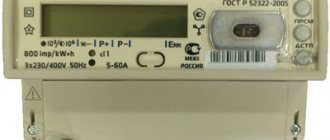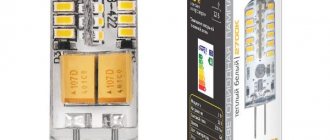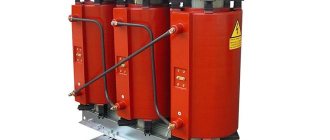You don’t have to be an expert to understand that every autonomous system that runs on electricity requires independent sources of electricity. We are talking about mobile devices, vehicles in which batteries are installed. The power supplies that are common today are of limited capacity and have a relatively short lifespan. Graphene batteries do not have these disadvantages. What type of battery is this, what is their design, pros and cons, where to find it - this is discussed in the article.
Graphene batteries are lightweight and highly conductive.
What is graphene
Previously, carbon was available in two forms - graphite and diamond. The first one was used as a pencil lead, and diamond is the most durable material on Earth. In 2004, British scientists of Russian origin K. Novoselov and A. Geim created a new form in the laboratory - graphene.
Based on Wikipedia, graphene is a substance with a film-like structure that is “assembled” from carbon atoms. Such a two-dimensional film does not occur in nature. And it is done by a person, under conditions of high pressure and temperature.
Essentially, graphene is a plane of graphite, separated from the overall structure of the material. The carbon atoms of graphene “bond” with each other and form a hexagonal crystal lattice. Due to the high-density bond, the substance is characterized by a high degree of rigidity and an increased thermal conductivity reserve.
The fact is that the electrons in the substance remain mobile, which means the material obtained in 2004 is suitable for use in semiconductor circuits and power supplies. The graphene battery weighs little, and at the same time has a capacity greater than that of currently available analogues.
Financial problems of implementing scientific achievements
The problem with creating new batteries is that too many companies are currently engaged in research in the field of batteries. There are simply a huge number of projects - from “foam” and liquid batteries to batteries with exotic compounds in the electrolyte. And there is no clear leader among all these companies. This situation does not arouse much enthusiasm among investors, who are not too willing to allocate money for new projects.
And a lot of money is required. “In order to create a small industrial line for the production of batteries created using new technologies, about $500 million is required. And even if a promising battery were created, it is not so easy to transfer scientific work into the commercial sphere. Mobile device developers or electric vehicle manufacturers will test new batteries for years before making a decision. Investments during this time will not pay off, and the development company will be unprofitable. Scientists say that it is difficult to set up an industrial line costing $500 million, especially if the annual budget is $5 million.
And even if the new technology hits the market, the manufacturer of the new type of battery will have to go through a difficult period of adaptation and finding buyers. But so far no one has reached this stage. Thus, the companies Leyden Energy and A123 Systems, which developed new, quite promising technologies, never entered the market. They simply didn't have enough money for this. Two more promising energy startups, Seeo and Sakti3, were acquired by other companies. Moreover, the amounts of these two transactions were much lower than what the first investors of the companies were counting on.
The largest electronics manufacturers, Samsung, LG and Panasonic, are more interested in improving their current products and increasing the number of their functions than in obtaining new types of batteries. Therefore, the process of optimizing Li-Ion batteries, created back in the 70s of the last century, is still ongoing. We can only hope that graphene batteries will still be able to break the vicious circle.
Graphene provided significantly improved specific capacitance with unprecedented reversible cyclic stability over 3,000 reversible charge and discharge cycles, even at very high current conditions of up to 1,280 milliamps.
Features of graphene batteries
For the discovery of graphene, scientists were awarded the Nobel Prize, since the resulting material is unique, and in addition to its thinness (sheet thickness is 1 atom), it is characterized by other properties:
- high electrical conductivity;
- flexibility;
- thermal conductivity;
- increased mechanical strength;
- transparency;
- impermeability to many gases and liquids.
Graphene-based technologies have attracted the interest of manufacturers, and they are ready to allocate serious funds for in-depth study. This material is used in various industries: high technology, medicine, ecology, space and military industries, automotive industry.
"New carbon" has seriously interested car manufacturers. Power supplies based on it are most suitable for electric vehicles. Due to the increased activity of charged particles, it was possible to increase the useful capacity of the battery. The material, arranged into a flat conductor, is capable of accumulating a large charge in a short period of time.
At the same time, at the initial stages of development, lithium was added to graphene sheets, but it reacted poorly to water and other oxidizing agents, and for industrial purposes it was necessary to look for something else. Lithium-graphene batteries are characterized by a long charging time, so they have not taken root in the automotive industry. And over time, a magnesium-graphene power source appeared.
History of discovery
Scientists have been searching for new materials for storing electrical energy for a long time. The components of batteries and accumulators used so far no longer meet modern requirements for electrical engineering. This was especially true for batteries and accumulators, whose low technical characteristics hampered the development of new economical and environmentally friendly vehicles.
The research was crowned with success in 2004, when two British scientists, immigrants from Russia, Konstantin Novoselov and Andrei Geim, obtained in the laboratory a new carbon-based material with the desired properties - graphene. For the creation of a carbon film one atom thick on a silicon oxide substrate with high storage characteristics, scientists received the Nobel Prize in 2010.
This development is considered the most promising in the field of electricity storage technologies, although technically it has not yet received mass application.
Device
Today, a graphene battery is a relative concept, since there are still few manufacturers of such devices, and they are in no hurry to report on the features of the technological process.
The “pioneer” of the production of graphene batteries is a company from Spain, Graphenano, which announced the first sample back in 2015. It charges in just 8 minutes, and the energy intensity is 10 times higher than that of lithium-ion counterparts. Grabat Energy engineers took part in the opening of the enterprise, which has enough capacity to produce 80 million cells per year.
A new type of power supply is made from a special metal-polymer housing. A pair of copper and aluminum plates are inserted into it, equipped with leads - electrical contacts. Between the electrodes there is an electrolyte, which can be in a liquid or solid state. The anode contains a reducing agent, and the cathode contains an oxidizing agent. To prevent negatively charged lithium atoms from moving freely between the electrodes, a separator is provided in the housing. In general, graphene batteries are similar in design to lithium-polymer batteries, only in the former the electrolyte and separator are graphene.
The operating principle is similar to lithium-ion batteries: during charging and discharging, lithium ions move from the anode to the cathode through the electrolyte. At this time, electrons reach the anode or cathode through an external circuit, which is necessary to create an electric current in it.
Operating principle:
The operating principle of a graphene battery.
- During discharge, the anode experiences an oxidative chemical reaction - free electrons appear and rush to the cathode, where there are few of them. But there is a separator in their way, and the only way out is to the load circuit, where the battery is closed. Electrons, moving in a directional manner, supply energy to the connected device.
- Lithium ions with a positive charge also rush to the cathode, but they pass freely through the separator.
- When all the electrons move to the cathode, the battery is discharged.
- When a certain voltage is applied to the electrodes, a process is started where the ions move in the reverse order. That is, electrons accumulate on the anode and remain there until the load is connected.
Now there are two approaches to the manufacture of innovative batteries:
- American model (graphene-polymer battery). The active substance is lithium cobaltate, and the plate material is graphene and silicon;
- Russian model. The lithium salt is replaced by magnesium oxide, which is lighter and less toxic.
It doesn’t matter what type, a graphene battery is much more efficient than its analogues, since it has become possible to increase the speed of movement of charged particles.
How to improve the performance of existing batteries
In the battery field, conventional (and promising) battery electrode materials are greatly improved by the addition of graphene. The graphene battery can be lightweight, durable, and suitable for high-capacity energy storage as well as reduced charging time. This will extend the life of the battery, which is due to the amount of carbon that is deposited on the material or added to the electrodes to achieve conductivity, and graphene adds conductivity without requiring the amount of carbon that is used in conventional batteries.
Graphene can improve battery properties such as energy density and shape in a variety of ways. Thus, lithium-ion batteries (and other types of rechargeable batteries) can be improved by introducing graphene into the battery anode and using the material's conductivity and large surface area characteristics to achieve morphological optimization and performance.
It has also been found that creating hybrid materials can also be useful in improving battery quality. For example, a hybrid of vanadium oxide (VO2) and graphene catalysis can be used on lithium-ion cathodes and provides fast charging and discharging, as well as greater cycle life. In this case, VO2 has high energy capacity but poor electrical conductivity, which can be solved by using graphene as a kind of structural “scaffold” on which VO2 can be attached—creating a hybrid material that has both increased capacity and excellent conductivity.
Researchers are looking for new types of active electrode material to take batteries to new levels of high performance and durability and make them more suitable for larger devices. Nanostructured lithium ion battery materials may provide a good solution. According to recent data, researchers from the University of Vienna and international scientists have developed a new nanostructured anode material for lithium ion batteries that increases the capacity and service life of batteries.
A 2D/3D nanocomposite based on mixed metal oxide and graphene, developed by two scientists and their teams, is claimed to significantly improve the electrochemical performance of lithium-ion batteries. Based on a mixed mesoporous metal oxide combined with graphene, this material could provide a new approach to more efficient use of batteries in large devices such as electric or hybrid vehicles. The new electrode material provided significantly improved specific capacitance with unprecedented reversible cyclic stability over 3,000 reversible charge and discharge cycles, even at very high current conditions of up to 1,280 milliamps. By comparison, modern lithium-ion batteries lose their efficiency after about 1,000 charge cycles.
Graphene battery design. The split crystal tends to become voluminous again. Scientists manage to contain the two-dimensional structure and make it work in the form of a galvanic cell. Stability depends on the selected electron pair. The battery design is reminiscent of lithium-ion batteries, but instead of a graphite layer, a graphene layer is introduced. Russian researchers replaced the anode with magnesium oxide. The composition is cheaper, the battery heats up less and the risk of fire is reduced.
Advantages and disadvantages
Graphene-based batteries are more efficient than their analogues, and it’s only a matter of time before they are used everywhere. Battery benefits:
- light weight. The weight of two square meters of graphene is 1.5 g, which is much less compared to lithium-ion analogues;
- high conductivity. Due to the porous crystal structure of the graphene crystal, electrons are able to move without obstacles. The electrical conductivity of the substance is higher than that of semiconductors, so the battery charges faster;
- strength. Graphene in this regard is practically not inferior to diamond, therefore power sources based on it are characterized by high resistance to destruction;
- waterproof. They have learned to “transform” graphene plates into a watery gel, and with such a solution the time required for recharging is reduced;
- high specific capacity. The graphene electrode not only accumulates lithium ions on its surface, but also allows them to penetrate into the material. It turns out that there are more charged particles in the battery, and at the same time the capacity increases;
- environmental cleanliness and safety;
- good maintainability;
- low price of components.
The technology also has disadvantages:
- low density. Ready-made batteries are too large and are not suitable for installation in mobile devices;
- the technology for maintaining a flat structure is complex, and this is reflected in the final cost of the finished product;
- the current small number of charge-discharge cycles;
- Batteries are not yet produced in large quantities.
Nevertheless, the prospects for such power sources are serious. With a graphene battery, a car can travel up to 1000 km without recharging, and it will take about 10 minutes to restore capacity. True, you can’t do without a powerful gas station.
From the realm of science fiction to the realm of laboratory development
When talking about nanotechnology, the first things that come to mind are the discovery of graphene and carbon nanotubes. It is with them that scientists associate breakthroughs in the field of electronics and pharmacology in the 21st century. The creation of quantum computers, systems for reading signals at the cellular level, nanorobots for treating the body - this is only a small list of emerging opportunities. Now these possibilities have moved from the realm of science fiction to the realm of laboratory development.
A special topic is microelectronics. Modern microprocessors and memory chips are already exceeding the technological standard of 10 nanometers. The milestone is 4-6 nm ahead. But the further developers move along the path of miniaturization, the more difficult the problems they have to solve. Engineers have come close to the physical limits of silicon chips. Those who are interested in modern microprocessors know that their performance slows down at a clock frequency of about 4 GHz and does not increase further. Silicon is an excellent material for microelectronics, but it has a significant drawback - poor thermal conductivity. And with an increase in clock frequency and element density, this drawback becomes a barrier to the further development of microelectronics.
Fortunately, today there is a real opportunity to use alternative materials. These are graphene, a two-dimensional form of carbon, and carbon nanotubes, which are a three-dimensional crystalline form of the same carbon. Already the first research results led to the creation of graphene transistors operating at frequencies up to 300 GHz. Moreover, the prototypes retained their characteristics at temperatures of 125 degrees Celsius.
Areas of operation
The material, due to its unique characteristics, can cause a revolution in many areas of industry. In addition to batteries for electric vehicles, batteries for mobile devices are being actively developed.
Thus, the South Korean giant Samsung is introducing graphene into power supplies for smartphones using graphene balls. But there are no full-fledged compact batteries yet, but the corresponding technologies are used in the manufacture of external batteries, which can charge a gadget not in an average hour and a half, but in 10 - 12 minutes.
Samsung is going to use graphene batteries in its smartphones.
Again, as for phones, in 2016 Huawei introduced a graphene-coated lithium-ion battery. It remains operational at temperatures up to +60° C, while the limit for existing analogues is +50°.
The trend is that lighter materials are now being created. And graphene is the very substance that will be useful for the production of flexible displays, computing devices, data storage devices, etc.
Technical capabilities
A new generation battery based on graphene has unique properties - the use of such energy sources will be a breakthrough in the creation of electric vehicles and the production of smartphones.
Charging speed
Spanish developers have presented a prototype of a graphene-based battery - the time to fully charge such a battery is tens of times less than similar lithium-polymer batteries, and in fast charging mode it is only five minutes.
Huawei used fast charging technology in one of its models - thanks to inclusions of graphene, 45 percent of the charge was accumulated in five minutes.
Storage properties of graphene batteries
Due to its structure, graphene is capable of accumulating large quantities of electrical charges on its surface, which can significantly increase the capacity of graphene batteries.
launched the production of Grabat batteries with a capacity that allows an electric car to travel more than a thousand kilometers without recharging.
Attention! German concerns have begun testing Grabat batteries on their own cars - the era of gasoline engines is ending.
Scope of application
The high capacity and charge/discharge speed of graphene batteries, as well as the low cost of their production, will become a new milestone in the production of electric vehicles.
Until now, the performance of mobile devices and phones has been significantly limited by battery life - with graphene energy sources, we can expect the emergence of gadgets with incredible capabilities. Samsung is solving the problem of introducing graphene into energy storage devices for phones using graphene balls.
Important! Small enough graphene batteries for electronic devices have not yet been created - graphene technologies are used only in the production of external batteries that can charge a smartphone in 10-12 minutes instead of an hour and a half.
Where to buy battery
Such power sources have not yet been sufficiently studied, so the authorities of many countries are in no hurry to give them the green light. However, the American company Real Graphene is already selling batteries based on this technology. The devices can withstand up to 1,500 charge-discharge cycles before losing capacity and are also more resistant to heat.
Real Graphene power banks with a capacity of 3000 mAh can be charged in 20 minutes using a 60 W charger. The price of a 10,000 mAh model with an output power of 50 W is $60. A 20,000 mAh version with 87 W charge, capable of simultaneously powering three devices, will cost $77.
That is, the time when it will be possible to buy a graphene battery for a smartphone is not far off.
Current developments
Charging units (powerbank) from Real Graphene are already on the market. They are based on graphene technology and allow you to charge your smartphone or tablet in a matter of minutes.
Their battery can withstand about 1,500 charging cycles without losing its original technical characteristics. At the same time, the device does not generate a large amount of heat and remains cool and safe during operation.
If we talk about cars, then just recently the Chinese company GAC announced that it was going to test graphene power supplies. They will be installed on the car and tested under real operating conditions.
The Chinese believe that an electric car with such a power source can get 85% charge in just 8 minutes.
The first tests are expected at the end of 2022 or at the beginning of 2021. The pandemic has made its own adjustments. Ultimately, the results will show whether the company will launch mass production.
The expected cost of a new electric Chinese car will be 30.5 thousand dollars. Moreover, about 40% of the cost is the price of the battery.
3DG development scheme
GAC specialists began mastering graphene technology back in 2014. Over 4 years of active work, we managed to create 3DG. This is a three-dimensional graphene material. In November 2022, the official presentation of the ultra-fast charging battery was held.
DIY graphene battery
Creating a two-dimensional structure of graphene and securing its properties is a complex task that many scientists are working on. You cannot make such a battery with your own hands, unless you get the substance itself. To do this, graphite is processed into powder, chemically treated and applied to an aluminum substrate. One way to get the desired composition:
Graphite powder.
- Take graphite powder and dishwashing liquid, place it in a metal container and mix for two days with a mixer powered by an asynchronous motor.
- The result will be foam in which microscopic graphite particles will be suspended.
- The foam is dried and dissolved in a varnish for processing aluminum - graphene is obtained.
- The resulting composition is applied to an aluminum substrate, on the basis of which a magnesium-graphene power source is assembled.
Graphene batteries are the future, we just need to fine-tune all the technical details of production. The technology is considered revolutionary and can seriously impact the world of electric vehicles, smartphones and other portable gadgets.
Advantages and disadvantages
It would be useful to look at the pros and cons that characterize graphene batteries and their development prospects.
There are quite a lot of strengths. Among them are the following:
- source material is accessible and widespread;
- graphene is produced in large volumes;
- the method of obtaining the material is quite simple and easy to implement;
- low weight, in which 1 m² of material weighs about 1 gram;
- environmental friendliness and safety for the environment;
- high strength;
- waterproof;
- the ability to quickly restore damaged areas;
- conductivity indicators are higher than any modern semiconductor;
- high specific capacity;
- the ability to potentially travel more than 1000 km without recharging;
- durable substance;
- independence from charge-discharge cycles;
- high charging speed.
How is production carried out?
The transformation of graphene-based inorganic compounds and usable metals can be accomplished in many ways. As new technology develops, methods are often invented and subsequently used.
In any method, there are always several ways to synthesize the material itself. It would be impractical to describe each of them, so one specific method will be discussed here.
A pure graphene electrode is prepared by dispersing graphene oxide powder (100 mg) in distilled water (30 ml) and sonicating for 30 minutes. The resulting suspension is heated on a hot plate to a temperature of 100 °C and then 3 ml of hydrazine hydrate is added.
The suspension is kept at 98°C for 24 hours to reduce graphene oxide. Reduced graphene oxide can be collected by filtration, leaving behind a black powder. The filtered powder is then washed several times with distilled water to reduce excess hydrazine.
The graphene powder is redispersed in water using ultrasound, and the resulting solution is then centrifuged at 4000 rpm for 3 minutes to remove larger particles. Graphene is collected by vacuum filtration and dried in vacuum. Companies in the UK, Russia, Spain, USA and South Korea produce on an industrial scale.
History of creation and team of Graphene
First, let's get to know the creators of the platform a little. In 2013, the report “A Peer-to-Peer Exchange for Polymorphic Digital Assets” was published by D. Larimer, C. Hoskinson and S. Larimer. It described a decentralized exchange-bank, soon created by Daniel Larimer, based on a price-stable token with a rate pegged to USD by market mechanisms - BitShares. Invictus Innovations was founded in 2013 to create the BitShares network. After the extremely successful implementation of the BitShares project, in the spring of 2015, Daniel organized a new company, Cryptonomex, and created the Graphene technology, which made it possible to switch to BitShares 2.0.
In 2015, with the participation of Larimer, the blockchain and social network Steemit were created on the basis of Graphene in record time, the token of which for a short time even occupied 3rd place in capitalization among all cryptocurrencies (now fluctuates between 39 and 41).
Dan Larimer is also the author of the first operating system on the blockchain - EOS, whose tokens now occupy 11th place in terms of cryptocurrency capitalization, according to coinmarketcap.com (despite the fact that the token appeared only in July 2022).
Advantages and disadvantages
The list of main advantages includes:
- Environmental cleanliness.
- Large specific capacity.
- High conductivity.
- Fast charging.
- Technical durability.
The only drawback of the battery is that the product is quite large. Because of this, it is not possible today to implant them into miniature gadgets (for example, phones).
The Fisker EMoion electric car will receive an innovative graphene battery
Fisker Inc., founded by Danish designer and entrepreneur Henrik Fisker, has published the first photos of the EMoion electric car. It will go into production next year.
In February of this year, “Behind the Wheel” talked about the invention of scientists at the Stanford Institute for Materials Science and Energy from California, who solved the problem of wear of lithium-ion batteries using graphene and simultaneously increased their specific capacity. Then it seemed that this was just another technology of the day after tomorrow, which would take decades to “finish”. However, Henrik Fisker said last week that his future electric car will receive just such graphene batteries, and yesterday he published the first full photos of the new product on his Twitter.
It is difficult to determine the dimensions of the car from the photographs; Fisker has not yet disclosed the figures, but promises a spacious interior and a convenient process of boarding and disembarking through guillotine-type doors. Carbon fiber and aluminum are used in the body structure. It is known that the Fisker EMoion will be able to travel over 400 miles (644 km) on a single charge and accelerate to 260 km/h. Other performance characteristics will be announced next year during the official presentation of the production version of the model. The electric car will be produced in the USA, the expected starting price is less than 40 thousand dollars, while the cheapest Tesla Model S with a power reserve of 350 km now costs 66 thousand dollars.
It is curious that Fisker has its own innovative batteries - their subsidiary Fisker Nanotech will produce them. In the future, Fisker does not rule out the possibility of selling graphene batteries to other automakers.
Considering Fisker’s previous failures, the graphene revolution he announced causes healthy skepticism among many experts, but if the Dane finally succeeds, he can outdo Elon Musk himself!
By the way, Fisker EMoion will also have the autonomous driving system that Tesla Motors boasts so much about. Henrik Fisker, at least, really hopes so.
- Henrik Fisker is still co-owner and chief designer of VLF Automotive, which specializes in high-performance sports cars with traditional gasoline engines.
- Fisker Inc. entered the public space in early October, and two weeks later another ambitious company was born in the United States - Lucid Motors, which also plans to produce “the world’s best electric cars,” and unlike Fisker, Lucid Motors already has a working prototype of the car.











